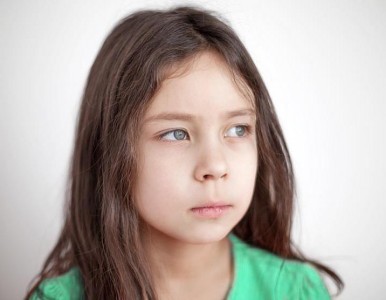An 8-year-old Experiencing Separation from Her Father
Rebecca (not her real name) came to me because her mother was concerned that she was crying a lot, was not eating, and was not keeping her room clean as she had before her father left the home. She was also picking fights with her siblings. She was having trouble at school and with her homework. She had stopped participating in class and was isolating herself from her friends. She would frequently cry herself to sleep at night.
 I saw her for two sessions with her mother and then, as she became comfortable working with me, I saw her one on one. When she first came I observed that she was emotionally shut down and very anxious. She had difficulty making simple decisions such as “What would you like to eat? Or what would you like to wear?” Because she was so shut down she was not able to receive emotional support and encouragement from her mother. In the individual sessions, I let her begin to express her feelings of sadness, anger, and torn loyalties between her father and her mother, in a safe space. We discovered that she had a number of negative beliefs such as “It’s my fault,” and “No one loves me.” Some cognitive reframing helped her to realize that she would be OK and that she was not the cause of her parents’ divorce. We used art therapy to help her reconnect with her creativity and boost self worth.
I saw her for two sessions with her mother and then, as she became comfortable working with me, I saw her one on one. When she first came I observed that she was emotionally shut down and very anxious. She had difficulty making simple decisions such as “What would you like to eat? Or what would you like to wear?” Because she was so shut down she was not able to receive emotional support and encouragement from her mother. In the individual sessions, I let her begin to express her feelings of sadness, anger, and torn loyalties between her father and her mother, in a safe space. We discovered that she had a number of negative beliefs such as “It’s my fault,” and “No one loves me.” Some cognitive reframing helped her to realize that she would be OK and that she was not the cause of her parents’ divorce. We used art therapy to help her reconnect with her creativity and boost self worth.
Homework and school performance improved as we worked through the feelings she had been unable to express. Now she has a close connection with her mother and both she and her mother are less bothered by feelings of guilt. She still misses her father but no longer feels overwhelmed and responsible for his leaving the family.
Many adults carry the pain of parental separation throughout their lives. While divorce and separation from any circumstance can be difficult, if children have a safe space to express and understand their feelings they can access the natural emotional resiliency we all possess. Appropriate therapy can make a huge and lifelong difference to such children.
David Shanks, LCSW


